Review for Star Trek: Picard - The Complete Series
Introduction
You should know how my brain works by this point. I streamed the first season of Picard, and had more than a few issues with it. I thought streaming was enough, and I needn’t shell out any more money. Then I streamed the second season, and I liked it a smidge more, but still not enough to want to revisit it any time soon. And then the third season was announced, and with it came the news that the original Next Generation cast would reunite for the finale of Star Trek: Picard. Not only did I want to watch it, I wanted to own it, to go with my Next Generation Blu-rays. And then I thought to myself, what’s the point of owning Season 3 of Star Trek: Picard, if I didn’t own the first two as well. And here we are, with the Complete Series; and naturally I have to watch the first two again as well to get the proper experience.
Star Trek: Picard isn’t your usual Star Trek show, at least not at first. It’s set 20 years after the events of the final Next Gen movie, Nemesis, and after the point (the destruction of Romulus by supernova) that kicked off the Kelvin movie trilogy. The Federation isn’t quite what it used to be, with Earth still reeling from a terrorist attack on Mars. As the story begins, Jean-Luc Picard has been retired from Starfleet for some years, now living at the family vineyard in France, writing books on history.
Actually, these three seasons comprise three serialised stories, ten hour movies in a way, so I’ll look at each story separately. There are separate extras on most discs, and each episode gets extras as well, accessible from the episode select menus. I’ll list the latter below with the episodes.
Season One
It’s 2399, and Jean-Luc Picard has been retired from Starfleet to his family vineyard for 14 years, after he resigned in protest over the Federation’s failure to support the Romulan evacuation from their destroyed worlds. He has to seek Starfleet’s assistance though when a girl name Dahj comes to him seeking help. She has a mysterious connection to the late Commander Data. She too is a synthetic life-form, but synths have been banned in the Federation following a devastating terrorist attack on Mars. Starfleet refuses to help, but if there is a chance that Data’s legacy survives, Picard will have to find an unconventional crew to help him instead. Yet there is an ancient force out there that hates artificial life to the point of wanting it all destroyed.
Disc 1
1. Remembrance
* Story Log (3:36)
* Deleted Scene (2:43)
* Video Commentary with Alex Kurtzman, Akiva Goldsman, Michael Chabon, Hanelle M. Culpepper, and Kirsten Beyer (44:18)
2. Maps and Legends
* Story Log (8:28)
3. The End is the Beginning
* Story Log (4:26)
Disc 2
4. Absolute Candor
* Story Log (4:51)
5. Stardust City Rag
* Story Log (7:19)
6. The Impossible Box
* Story Log (7:10)
7. Nepenthe
* Story Log (6:24)
Disc 3
8. Broken Pieces
* Story Log (5:06)
* Deleted Scenes (1:02)
9. Et In Arcadia Ego, Part 1
* Story Log (4:06)
* Deleted Scenes (1:08)
10. Et In Arcadia Ego, Part 2
* Story Log (7:26)
* Deleted Scene (0:37)
Season Two
Admiral Jean Luc Picard’s professional life seems to be back on track, although his personal life progresses with its typical lack of success as always. But he’s called back to duty when a spatial anomaly appears, accompanied with a transmission asking for Picard by name, to negotiate admission to the Federation. The team reassembles on the USS Stargazer, now commanded by Captain Rios, only for them to learn that the transmission is from the Borg, and it appears peaceful contact is the last thing on their mind. They do what must be done to protect the Federation from assimilation by the Borg, only to wake up in a alternate reality, where General Jean Luc Picard is a bloodthirsty killer who has kept the Confederation safe by boldly going and eradicating hostile aliens, and enslaving those more amenable.
It becomes clear that history has been changed, and if they want to put things back on track, they’ll have to find a way to go back in time to 2024, and put right what once went wrong. This time it’s not just the Borg however; this time it seems Picard’s most personal nemesis is pulling all the strings.
Disc 1
1. The Star Gazer
2. Penance
3. Assimilated
* Deleted and Extended Scenes (2:41)
Disc 2
4. Watcher
5. Fly Me to the Moon
* Deleted Scenes (3:18)
6. Two Of One
7. Monsters
* Deleted Scenes (1:18)
Disc 3
8. Mercy
9. Hide and Seek
10. Farewell
* Deleted and Extended Scenes (2:11)
Season Three
Jean Luc Picard is finally comfortable in his own skin, or at least more comfortable than he’s ever been before, and is looking forward to spending time with Laris, looking forward to new adventures... And this is when he receives a distress call from someone he hasn’t seen in many years, Beverly Crusher. More worrying, with the call from help is an enigmatic warning not to trust anyone, not even Starfleet. He can’t go alone, so he turns to the people he can trust, specifically Will Riker. The way they get hold of a ship to take them there will have consequences, but it turns out to be more than just a simple rescue mission.
When they get to the location, they find a lot more than they have bargained for. For one thing, Beverly Crusher has a grown son now, Jack Crusher, and there is an all-powerful intimidating ship, the Shrike, whose Captain Vadic is hunting for him. And as Frontier Day approaches, no one knows that an insidious conspiracy is about to unfold in the Federation. If they are to have a chance at stopping it, the original crew of the Enterprise D will have to come together one more time.
Disc 1
1. The Next Generation
* Audio Commentary with Jonathan Frakes, Jeri Ryan, Todd Stashwick, Terry Matalas, Ed Speleers, and Stephen Barton
2. Disengage
3. Seventeen Seconds
* Audio Commentary with Gates McFadden, Michelle Hurd, and Terry Matalas
Disc 2
4. No Win Scenario
* Audio Commentary with Jonathan Frakes, Todd Stashwick and Terry Matalas
5. Imposters
6. The Bounty
* Audio Commentary with Jonathan Frakes, Brent Spiner, Levar Burton and Terry Matalas
* Deleted Scenes (2:53)
7. Dominion
* Deleted Scenes (3:02)
Disc 3
8. Surrender
* Deleted Scene (0:47)
9. Võx
* Deleted Scene (3:29)
10. The Last Generation
* Audio Commentary with Jonathan Frakes, Jeri Ryan, Ed Speleers, and Terry Matalas
* Deleted Scenes (1:46)
Picture
The three seasons of Picard get a 2.39:1 widescreen 1080p transfer on these discs. The line between television and cinema has been well and truly erased at this point. Indeed, when it comes to content, it’s television that is the more interesting and experimental medium right now. Star Trek: Picard is appropriately cinematic on these discs, when it comes to the scope of the storytelling, the world building and the production design, and especially the visual effects work. The transfer is pretty solid, the image is clear and sharp, colours are rich and consistent, and detail levels are excellent. Having said all of that, I did notice some banding during the effects scenes, especially the outer space sequences. But by the time we’re up to Season 3, I haven’t seen Star Trek look this good before, not even in the movies.
Sound
Take note...
Season 1, DTS-HD MA 5.1 Surround English, with optional English subtitles.
Season 2 and Season 3... DTS-HD MA 5.1 Surround English, Dolby Digital 5.1 Surround German, Spanish, French, Italian, and Japanese with subtitles in these languages plus Danish, Dutch, Norwegian, Swedish, and Finnish.
It’s annoying when specifications change from one season to the next, but for my purposes, the English audio and subtitles are all present and correct. The presentation is excellent, cinematic and immersive, making the most of the action, and with the music hitting all the right notes (pun intended) when invoking Star Trek nostalgia. That’s pushed beyond all limits for the third season when it comes to revisiting movie themes past, and dusting off familiar sound effects. You do get the modern approach to dialogue, with some of it occasionally vanishing beneath ambient noise, but hey, that’s what subtitles are for, right?
Extras
You get 9 discs in a DVD Amaray sized brick, with two discs overlapping on the front panel, two on the back, two overlapping on one centrally hinged panel and a second panel with two discs overlapping on one side, and one on the other. The inner sleeve offers an episode and extras listing, and the whole thing slides into a thin card slipcase. The discs boot to animated menus. It need not be said that to avoid spoilers for that specific season, it’s best to watch the extras and listen to the commentaries after you finish watching that season.
Season 1 – Disc 1
Star Trek: Short Treks: Children of Mars (8:21)
Optional Audio Commentary with Alex Kurtzman, Kirsten Beyer, and Jenny Lumet
Make It So (10:04)
Season 1 – Disc 3
Aliens Alive: The xBs (12:34)
Picard Props (13:20)
Set Me Up (14:30)
The Motley Crew (19:10)
Gag Reel (7:56)
Season 2 – Disc 1 (autoplays with a trailer for Lower Decks)
The USS Stargazer (18:29)
The Chateau (15:24)
Season 2 – Disc 3
The Trial Is Over (12:04)
Rebuilding the Borg Queen (11:11)
Picard Props (12:06)
Picard Passages (24:59)
Gag Reel (3:55)
Season 3 – Disc 1
The Gang’s All Here (19:08)
Villainous Vadic (20:44)
Gag Reel (6:11)
Picard: The Final Season Q&A (42:36)
Season 3 – Disc 3
The Making of The Last Generation (42:50)
Rebuilding the Enterprise-D (16:54)
Conclusion
I didn’t like Star Trek: Picard when I first saw it, and it’s all Gene Roddenberry’s fault. Back in 1987, when The Next Generation was germinating, Roddenberry laid down the rules, and top of the list was no conflict. Sometimes limits are challenging, and sometimes limits cut writers off at the feet. But Next Generation ran for seven years and four movies with little to no conflict between the main characters; the challenges coming from the aliens that they encountered. And for seven years, we had Picard pontificating on a regular basis at how evolved humanity was, how greed, want and ambition were things of the past, how the Federation had got rid of money, how no one wanted for anything.
Then I turned on Picard, set some 20 years after the Nemesis movie in terms of narrative continuity. And now the Federation is a flawed reflection of our own society, characters swear like sailors, drink, smoke, and partake of illicit substances, all the interesting stuff that we were told humanity had evolved out of. I spent a good few episodes just annoyed at the screen for that continuity disconnect before I actually started paying attention to the show. So this second time around on Blu-ray allowed me to fully devote my attention to the stories. What we have here in these three seasons of Picard are really three serialised stories, mini-series with movie level production values, or as I see it, three ten-hour movies. It’s also not hard to see that they are influenced by Star Trek movies past, The Search For Spock, The Voyage Home, First Contact, and The Wrath of Khan.
Season One
It’s an irony that when the original series aired, it was focused on the three main characters of Kirk, Spock and McCoy, with the rest of the characters mostly as support, but by the time the original series movies came out, it had become much more of an ensemble. The Next Generation was the other way around, very much an ensemble piece over its seven years on television, but the movies quickly turned into the Data and Picard show, with those two characters dominating the stories. I didn’t exactly appreciate that. In a way, the first season of Picard continues in that same vein, despite Data having ‘died’ in Star Trek Nemesis. As you might guess from the quote marks, Data turns out to be only mostly dead in Picard’s first season, and that drives the story, reminiscent of The Search For Spock.
I’ve already ranted about how Picard tears up the Roddenberry rule book to tell its story, but this first story absolutely couldn’t work any other way. There were a couple of notable episodes in the TV series, particularly The Measure of a Man where Picard went all out to establish androids as sentient and independent, and to be treated as all other intelligent life. And Picard begins with a flashback to the day a terrorist attack on Mars, supposedly by android slaves rebelling against their masters, leading to a ban on androids in the Federation. It’s as un-Star-Trek-ian a starting point as you could conceive of, but it’s that which motivates Picard’s adventure, when he learns that there is a theory that Data’s whole consciousness can be reconstituted from a single surviving positronic neuron. And of course, his last act was to download his consciousness into B4, the inferior android and hopeful plot device from Star Trek Nemesis.
That there is a ban on androids now might be a sticking point, but it turns out that a couple of researchers headed off into the farthest reaches of the galaxy to continue their work, and that work has borne fruit, with the newest artificial life, synths, now android brains in biological bodies that seem indistinguishable from humans. And it turns out that some synths, wholly unaware of their own nature have been seeded into the Federation. When Picard encounters one such synth, a girl named Dahj who Data presciently painted decades previously, he also runs into a conspiracy behind the ban on androids, a Romulan plot linked to an ancient prophecy about artificial life rebelling against, and wiping out its creators. There is a secret Romulan sect intent on finding and destroying all artificial life before this can happen, which means time is running out for Picard to find and rescue the surviving synths, the legacy of his friend Data.
Yet for this adventure, when Picard turns to Starfleet for help, he gets the brush off, so he has to recruit a band of misfits, Starfleet dropouts, a socially awkward scientist, and a Romulan warrior monk aboard a souped up freighter. It’s a crew that’s rough around the edges and certainly more colourful than usual. The world post Next Generation is presented as dark and gritty compared to the optimism of the series, and this particular cast of characters reflect that.
It makes for an interesting show, and giving a theatrical quality story, in terms of stakes and production values. With the expanse of ten hours to unfold means that the story can get as complex and thought provoking as it needs to be. The character development too is really well done (aside from one particular loose end). It may all be a new cast, but the nostalgia is strong in this show (no small reason for the fans to flock to it in a way that Discovery never appealed), and it does serve well when it comes to cameos from the various TV series since Next Generation. By the same token, it’s not shy about dispensing with notable side characters from those shows, and in brutal ways when needs be. It’s a well put together story, told with a lot of style, but for me it is a continuation of the disappointing Picard and Data show the franchise had become by the time of the movies. Even if Data isn’t technically in this story, that aspect of The Next Generation, the aspiration of artificial life to become more human, had begun to outweigh the other qualities of the show towards its end, and exploring that idea even more in the first season of Picard didn’t really enthuse me.
7/10
Season Two
If Season One echoed Star Trek III: The Search For Spock in its storyline, Season Two of Picard is a proper mash-up, a cross between Star Trek IV: The Voyage Home and Star Trek: First Contact, the two time travel movies. It also builds heavily on the lore established in the original series episode Assignment Earth, and it throws in a healthy soupcon of Mirror Universe, although in this story, it’s not a parallel Mirror Universe, rather an alternate time line where the worst of humanity prevails.
With the Data and Picard show a mainstay of the Next Generation movies as I mentioned in the Season One segment, other constant aspects of the Next Generation are the Borg, the cybernetic hive mind race from the other side of the galaxy, intent on conquest by assimilating all in their path, turning all they encounter into Borg as well. They’ve been the arch-villain of the Next Generation, while the most charismatic antagonist that Picard has faced in his career is the trickster god-like Q. Season 2 offers a two-fer, with Picard encountering the Borg early on in the story, he reacts in a predictable way, choosing self-destruction instead of assimilation.
They’re not dead of course... They wake up in this horrific alternate time-line, where the Earth’s ecology has been devastated by climate change, and is only held together by technological intervention. This is a galaxy where it was the human race that rampaged through the cosmos, conquering and genociding their way through the final frontier, and where General Picard is hailed as the most notorious conqueror of them all. It’s Q, but not as we know him. He’s a lot shorter of patience, and has no room for kindness with the lesson that he wants to impart to Picard. This timeline is a consequence of Picard’s choices, an inevitable consequence of his past, and Q says that he should just live with it. Ever the contrarian when it comes to Q, Picard realises that something happened in the past, and he has to gather the other members of his team that were brought to this alternate time line, and find a way to travel back to the past and put right what went wrong. But it turns out the only way to do that is with the last surviving Borg in this timeline, the Borg Queen.
And this is how they wind up back on Earth in 2024, where the Europa Space mission with Renee Picard at the helm is due to launch, and where Adrian Soong is trying desperately to cure his daughter Kore’s genetic affliction, and where Q’s meddling is liable to doom the human race to its dark fate.
If you want to be cynical about it, Season Two is like run through of Trek’s greatest hits. The Next Generation episode Tapestry saw Q give Picard a vision of the world if he had made different choices – The It’s A Wonderful Life trope, and the whole season is a darker version of that. They wind up in the past, trying to save the future, and early on, in 2024 Los Angeles, there’s plenty of light culture clash comedy just like in The Voyage Home, and there are a couple of cute references to that film too. But as the season unfolds it morphs into First Contact, with a Borg Queen looking to assimilate the past, and an important space mission to preserve.
Picard and his crew can’t do it alone. There is help in the past though, although Guinan, who looked like Whoopi Goldberg in the 19th Century, and in the 24th Century, looks nothing like Whoopi Goldberg in the 21st. In the original series episode Assignment Earth, Captain Kirk encountered a technologically advanced observer on Earth of the 1960s named Gary Seven, along with his secretary Roberta Lincoln, and his cat Isis, whose mission it was to discreetly keep history on track. It turns out they weren’t the only such observers, and there is a woman named Tallinn whose mission it is to keep Renee Picard’s history unfolding as it should.
This could be just a whole heap of fun, and pardon my French, entertaining fanwank, if it didn’t have a strong dramatic through-line, and to the show’s credit, the second season is even better in this regard than the first. Season One was about Picard coming to terms with his mortality, and about dealing with his regret regarding Data. Season Two is also very much about regrets, about knowing oneself, and about coming to term with ones demons.
When we encounter Picard at the start of this season, he gives the impression of a man content with life, but he retains that reluctance to commit to others that he has shown throughout his story from the start of The Next Generation. The heart of this story takes him on a journey to understand just why that is, and it turns out that it was a trauma in his childhood that drove him to the stars, and it was that trauma that emotionally isolated him. It involves a significant retcon if you recall the Season One Next Generation episode Where No One Has Gone Before, but it’s explicitly explained in dialogue here to make sense. If you’ve heard Sir Patrick Steward speak of his childhood in interviews, you can imagine that the storyline here was a very personal one.
All of which brings us to Q, Picard’s bugbear, the omnipotent trickster god who puts Picard on the path of self discovery. I have always adored John deLancie’s character; for me Q is the hero of Star Trek the Next Generation. Way back in the original series episode Who Mourns for Adonais, Kirk declared that humanity has no need for gods, no all powerful beings to gently and lovingly guide their flock. Q can’t gift Picard the answers with his munificence, he knows that Picard has to learn through adversity, he has to be tormented onto the right path. In one final call-back, just as the whole of the Next Generation finale, All Good Things saw Picard having to break out of his human mindset to deal with a problem, ironically of his own creating, here once again, Q plucks Picard from a disaster that Picard himself instigates, to give him a chance to correct his course. And in the end, we see Q at his most vulnerable, his most human, and that only confirms everything I’ve suspected about the relationship between Q and Picard.
If I do have a nit to pick with this season, it’s the epilogue, where a galactic threat that motivated the whole thing is suddenly revealed as an “orange swirly thing in space”; the kind of epic Deus ex Machina that Star Trek Discovery builds whole seasons upon, but here thankfully is just presented as an afterthought. And I can’t hide my cynical side, the sense that this whole second season is just a love letter to Treks past. I hope that cynical side doesn’t pop up again, given just how Season Three is supposed to go.
8.5/10
Season Three
Well, this is The Wrath of Khan, a movie that the Star Trek franchise has been revisiting time and again in subsequent films, trying to recapture lightning in a bottle, to diminishing returns. You have villains seeking revenge, and the Captain learns that he has a son that he never knew, and there is a doomsday scenario to thwart. Nothing is ever going to match the Wrath of Khan movie, but Season Three of Picard gets closer than anything else has ever managed. The funny thing is, that with Seasons One and Two, I appreciated what was original about those stories, and kind of bridled at the embrace of nostalgia, revisiting familiar names and faces (only to kill them off), and throwing in lots of cute bits just for the fans. Season Three pushes the levers all the way to the maximum in this respect. These final ten episodes of Picard are really just a love letter to the fans, and going by my experience of Seasons One and Two, I shouldn’t like this. But on the contrary, this is the best of Picard, and makes it all worthwhile, a proper valentine to the fans of Star Trek: The Next Generation, and the perfect note for that particular cast to bow out on, if indeed this is the last that we’ll see of the Next Generation cast together.
I did have to pause a minute to re-evaluate my perspective. From 1966 to 1969, the original series cast was on television, and thereafter they reunited for an animated series, and subsequently six feature films, a period of 25 years, although Leonard Nimoy reprised his role as Spock as recently as 2013 in Star Trek Into Darkness, 48 years after he originated the role in the first Star Trek pilot. As for the Next Generation cast, they had seven years on television from 1987 to 1994, then going straight into movies, and have now reunited for this third season in 2023, 36 years of boldly going together into the final frontier. Only the Red Dwarf cast also have that kind of longevity in sci-fi.
The last two original series films became targets for critics to poke fun at the age of the cast, still parked in the same jobs on the same starship. But Picard Season 3 works, and works brilliantly because it embraces the age of the characters, the passage of time. These aren’t the same characters that we met in The Next Generation TV show; they had to move on from the Enterprise-D when Deanna crashed the ship, but they were already going their separate ways at the end of Star Trek Nemesis, the last of the Next Generation feature films. Poor though that was, it at least recognised that people grow and change through their lives. The first two seasons of Picard reinforced that when we re-encountered a Picard who was somewhat bitter and disenfranchised in retirement. The first season compelled him to come to terms with the past that had disenfranchised him, and the second season made him come to terms with who he is, so that he can live in the present. It’s no surprise then that this third season is about the future, a future that he didn’t think he had, until he meets Jack, the son he never knew.
The third season also takes this approach with the rest of the Next Generation cast, Riker, Crusher, Worf, Deanna, and Geordi. They are in different places when the story begins, both physically and emotionally. Worf has been on a spiritual journey after a career as a warrior, to find balance in his life. Beverly Crusher dropped out of contact and has been gone for twenty years. Geordi has become a family man and has settled down. And while we encountered Deanna and Will Riker and their daughter Kestra in the first season, grieving a lost son, it turns out that they haven’t been able to work through their grief together, putting a strain on their marriage.
All of this is why Riker is so ready to help Picard when he gets a distress call from Beverly Crusher, calling them to a distant part of space, and warning them not to trust anyone in Starfleet. So they have to get aboard Riker’s old command, the Titan, now captained by a sarcastic man, Liam Shaw, with Seven of Nine as his first officer, and kind of steal the ship, or at least divert it away from its mission. They find Crusher’s ship, and they encounter Jack, and they also encounter a beast of a ship called The Shrike, whose captain, a woman named Vadic is the villain of the piece, relentlessly hunting Jack, and who with an arsenal of stolen Federation secrets, seriously outguns the Titan.
Speaking of the stolen secrets, it turns out that Worf is with Starfleet intelligence, and with Raffi Musiker is investigating this theft, an investigation that uncovers a secret conspiracy that eventually leads to the Titan. This is what is good about the storytelling. We encounter the crew of the old Enterprise organically as the story unfolds, and because they are different people now, they don’t just slot back together as if no time has passed. There is friction, there is the kind of character conflict that Roddenberry outlawed when he created The Next Generation, but it makes for the best kind of storytelling. And it’s a very well put together adventure that keeps you on the edge of your seat, keeps you glued to the screen with a daft grin on your face.
That daft grin will be caused by the nostalgia. I won’t mince words, Season Three of Picard is fanwank, it is glorious, awe-inspiring fanwank. Every nod to the past, every reference, every delightful plot development just comes as a gift to fans who have been devoted to this series for over thirty-five years. I’ll even forgive the red herring of the holographic Moriarty, who featured so heavily in the trailers, but in reality just turns out to be a symptom of sorts. I don’t even mind the conclusion of the story. If you can’t lift from Return of the Jedi 40 years after that movie came out, when can you? Alas, there wasn’t enough room for all of the characters from the first two seasons. Laris got a little lip service at the start of the story, but Elnor was noticeable by his absence. But I do love the Liam Shaw character, a Starfleet captain with a traumatic past, who goes on this journey from asshole to hero, but who never loses that acerbic tongue. It’s hate at first sight, but by God you’ll wind up wishing to see him again. And given this is Star Trek, it’s not beyond the bounds of possibility, especially given what happened to Picard at the end of the first season. Also Amanda Plummer is mesmerising as Vadic, channelling her father (Christopher Plummer played General Chang in Star Trek VI) when it comes to villainously spinning in chairs. If you haven’t guessed by now, I love, love Season Three of Picard. What a note to bow out on!
9½/10
In Summary
The thing that I didn’t like so much in the first two seasons, turns out to be what made the final season so brilliant. I wouldn’t have expected that. I was on the fence; I didn’t quite connect with the story. But the second season was a strong outing, although now I wonder whether I would have enjoyed it more if it had pushed its nostalgia and references to Treks past as hard as the third season did. Season Three put me in mind of the best of the Star Trek franchise and I was left wanting more. It turns out that I’m not the only one. There was so much fan clamour to see more of the new characters, the new hero ship that a potential spin-off Star Trek: Legacy has got enough traction to be in serious news articles, even if there has been no mention of a release date, or indeed admission that the series is in any way close to pre-production. But with Star Trek Discovery also ending, Paramount does have a slot vacant for a Star Trek show.
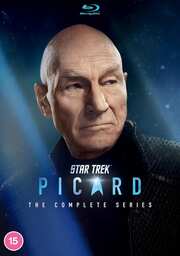









































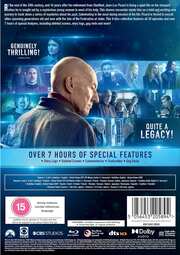




















































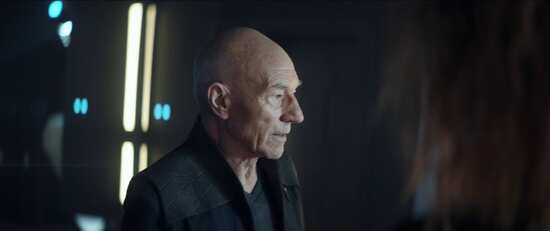
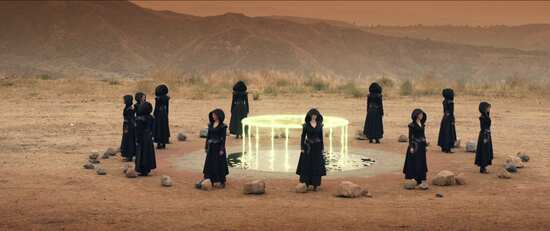


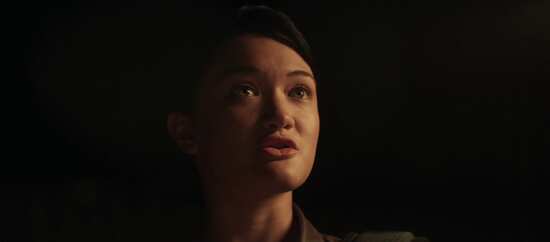
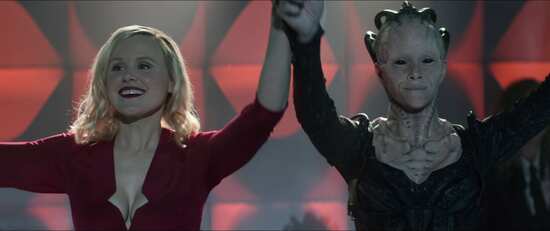
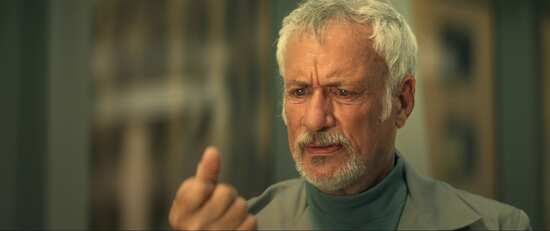
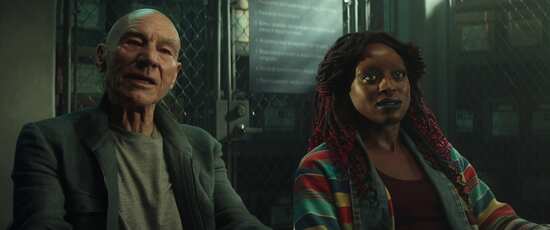

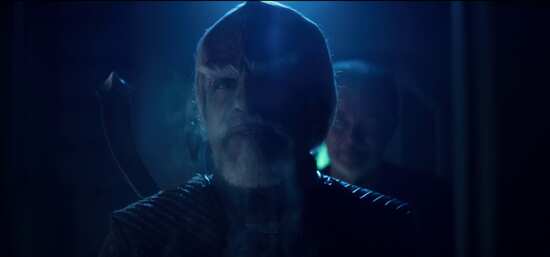
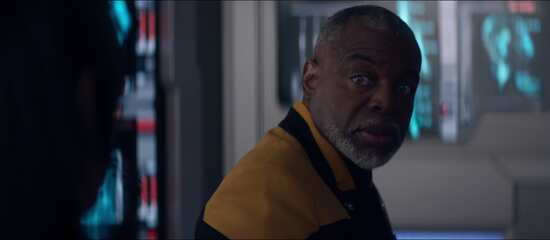

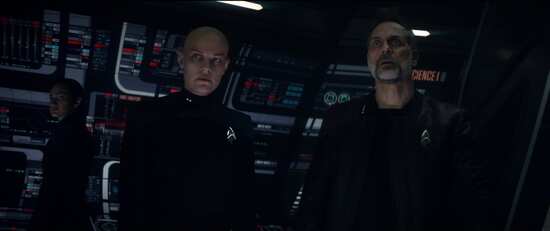
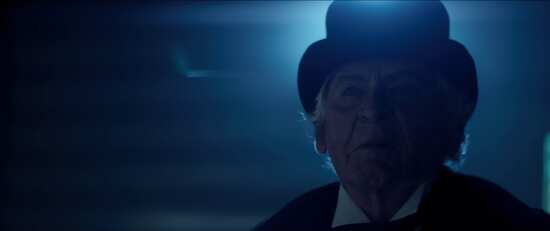
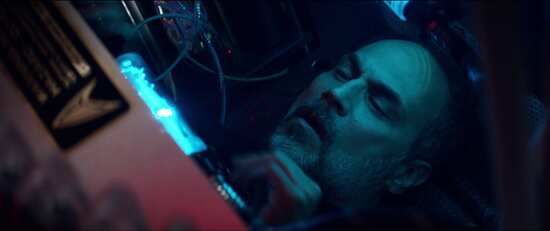


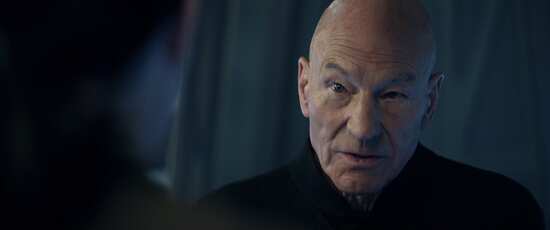
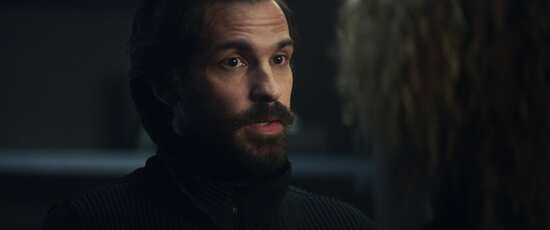
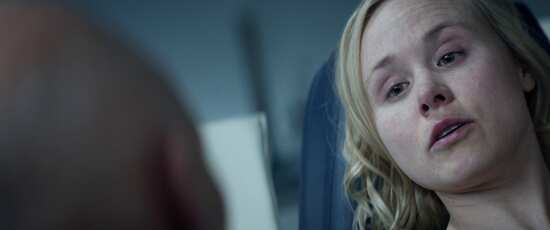

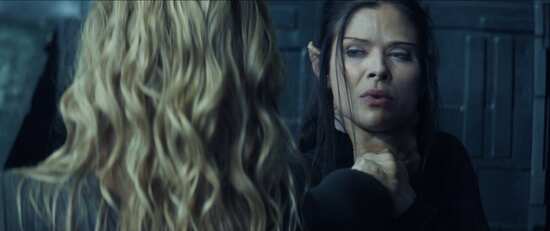
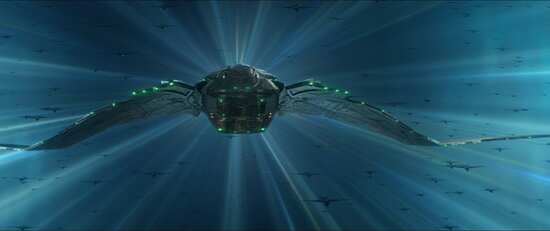
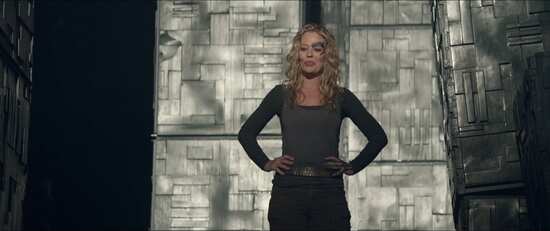
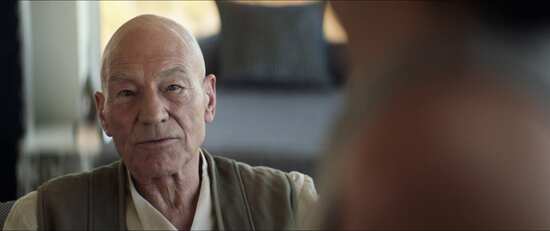
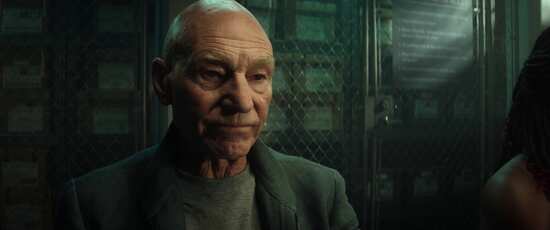
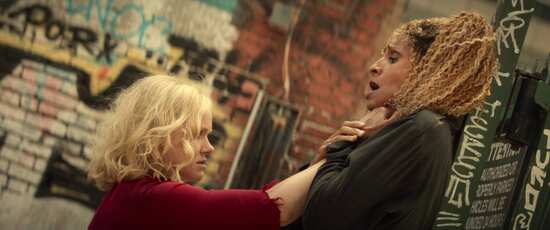
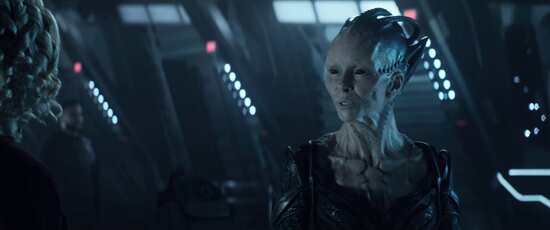
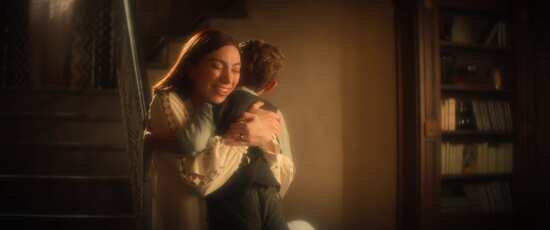
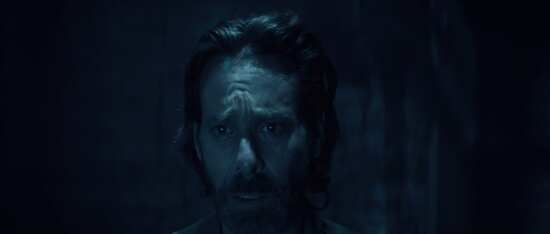

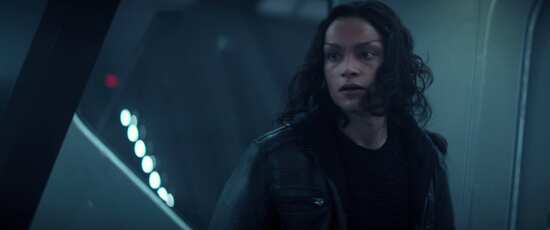

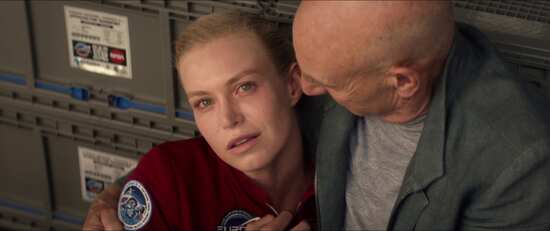
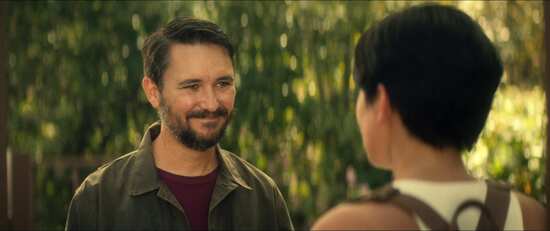
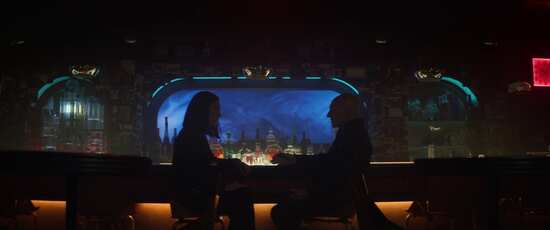
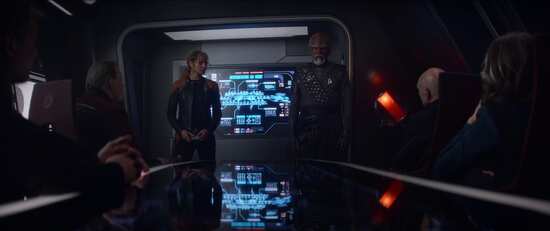
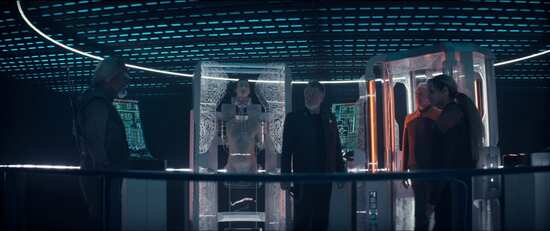
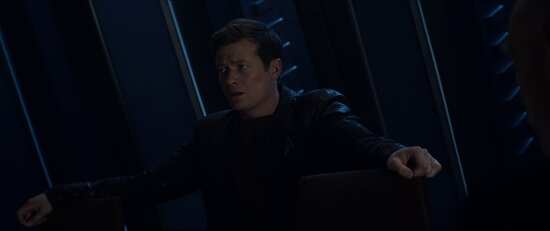

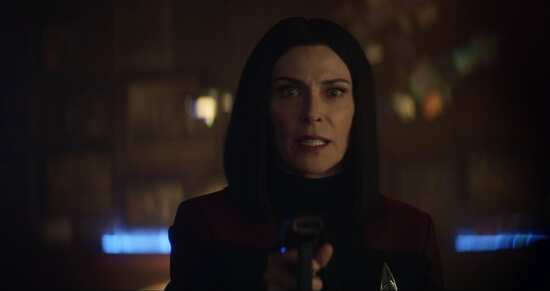
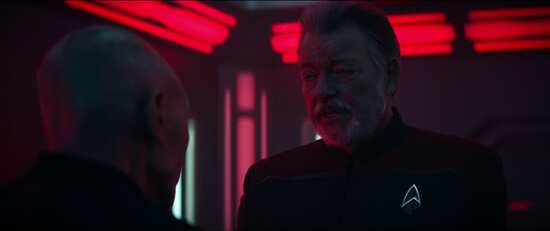
Your Opinions and Comments